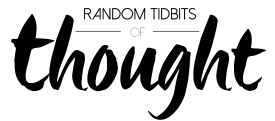As an Asian American growing up in LA’s San Gabriel Valley area at the turn of the millennium, I was exposed to a huge range of Asian culture and cuisine. One of the mainstays of my childhood (and yes, even today) has been enjoying boba milk tea, a sugary Taiwanese dessert drink with chewy tapioca balls supremely popular in SoCal’s East Asian mecca.
The Story of Boba
I still remember trying boba milk tea for the first time at a Lollicup in Hacienda Heights back in 1999. I was immediately intrigued by the interplay of sweetness and chewiness that the drink and topping offered. Clichéd as it sounds, my life was never quite the same after that. Whether it was begging my parents for boba milk tea as an after-dinner dessert, or sharing a bag of popcorn chicken with friends at the newest boba shop, or grabbing a quick post-workout drink after swim practice, I’ve tried and seen it all through the years.
Even after moving up to NorCal for college, I stayed rooted to my boba milk tea ways, scoping out all the local boba shops in the East Bay and looking forward to winter and summer breaks so I could go home and check out the latest new boba shop in San Gabriel Valley, the land with boba shops on every corner.
As part of the first generation of boba drinkers in the United States, I’ve witnessed the evolution of boba milk tea firsthand. The other day, I was waiting for my order at Boba Guys in San Francisco with friends and the topic turned to the history of boba milk tea. I covered it in detail for a good 5 minutes and probably looked misty-eyed while doing it. My friend pointed this out too, and the idea behind this post was born.
But First, A Disclaimer
This post is not meant to be an official (or even accurate) account of the development of boba milk tea in the United States. But it will be a history of the dessert drink from the perspective of yours truly, a boba milk tea fanatic from SoCal who has probably had it every week for nearly the past two decades. Take it for what it’s worth.
Origins
Boba milk tea originated in Taiwan in the late 80s and became a popular fixture at night market food stalls, especially during Taiwan’s hot and humid summers. At the time, shaved ice and tapioca balls were already well-known dessert items and people in Asia already drank milk tea. So it wasn’t surprising that some enterprising food stall owner decided to combine all three into the drink that became boba milk tea.
In the 90s, Taiwanese immigrants and entrepreneurs brought boba milk tea shops to the United States. Southern California, especially San Gabriel Valley and surrounding cities with Asian-heavy populations, were logical places to start off. With the migration of boba milk tea complete, we move on to its development in the States.
The Three Waves of Coffee…And Boba Milk Tea?
In order to understand the development of boba milk tea in the United States, I think it’s helpful to look at the development of a similarly well-loved drink – coffee.
There are distinct waves of coffee that marked specific time periods, characteristics, and priorities. The first wave consisted of instant coffee brands such as Folgers and stressed convenience and mass production. The second wave included famous chains such as Starbucks and moved towards specialty coffee and the social experience of drinking coffee. And finally, the third (and current) wave consists of smaller coffee shops and chains that focus on coffee origin and artisanal production.
With the three waves of coffee in mind, we now have a basic structure to look at the history of boba milk tea.
First Wave of Boba Milk Tea
The First Wave of boba milk tea is where it all started, at least in the United States. These early shops popped up in the late 90s and early 2000s, filling the small spaces for rent next to Asian restaurants, inside Asian supermarkets, and at Asian shopping centers.
The First Wave shops were no-frills and usually competed on price and speed at the expense of quality. From what I remember, popular price points were $1.00 or $1.50. The milk teas were usually pre-made and the boba and other condiments were hit-or-miss, sometimes overcooked or weirdly textured. Forget asking for less sugar or fancy custom drinks – you got what you paid for, and you got it quick. A lot of these shops also offered food such as popcorn chicken or Taiwanese sausage over rice.
For many people, these were the first boba milk teas they’d ever tasted, and as time went on, the drink became a familiar site at Asian shopping centers and began to surface closer to the mainstream American stores. I consider shops such as Lollicup, Quickly, and Tapioca Express as First Wave examples. Whenever I think about these places, I picture rainbow boba straws, extremely functional furniture and decor, and Asian music playing in the background.
Second Wave of Boba Milk Tea
I remember during one of my college winter breaks back in SoCal, I kept hearing the buzz about a new milk tea place with two-hour lines. That was the first time in my life that I’d heard of anyone willing to wait for boba milk tea. Then people started to post these chubby boba cups on Facebook, and I knew a shift was happening. The shop I’m referring to is the famous Half & Half, a perfect Second Wave example.
The Second Wave of boba milk tea had been brewing all this time and began to explode around 2010. These shops focused more on quality, comfort, and ambiance. Gone were the days of the pre-mixed milk tea – Second Wave shops made drinks to order, with freshly-brewed tea from Asia and top-notch ingredients. Many of these spots were set up for comfort, by either providing a full-service restaurant experience or stylish furniture for people to lounge and hang out. The price went up along with these improvements, to $3-4 per drink.
To me, Ten Ren was the Second Wave precursor. Many of the Second Wave shops used the higher-end First Wave shops like Ten Ren as a blueprint, then added their own spin. Half & Half, for example, changed up the traditional milk tea cups and offered a variety of extremely dessert-focused drinks. Some other shops I consider Second Wave include Factory Tea Bar, Sharetea, and Mr. Green Bubble. These were shops likely owned by Taiwanese entrepreneurs, but now run by their kids.
Third Wave of Boba Milk Tea
The Third Wave of boba milk tea kicked off around 2012, pretty much the same time Instagram and the millennial generation both came of age. Similar to third-wave coffee shops, these Third Wave milk tea shops emphasized tea origin and artisanal production. Many of them looked just like your favorite super-hip coffee spot, with reclaimed wood and minimalism galore.
Although it’s harder to draw the line between the Second & Third Waves, I think one key difference is that the Third Wave is distinctly Asian American. These shops were opened by boba milk tea aficionados who grew up in the States and like me had been drinking milk tea practically their entire lives. They also grew up navigating two distinct cultures in a social media-fluent environment. So it’s not surprising that they were able to combine quality and aesthetics into a package appealing to veteran and first-time milk tea drinkers alike.
I consider shops such as Asha Tea House, Plentea, and Boba Guys as Third Wave. Just a quick peek at the Boba Guys’ Instagram should give you a hint that Third Wave milk tea was designed to be extremely photogenic. Matcha and multi-layered tea drinks are the name of the game. A lot of these shops will also have tea origin literature and will even whisk matcha to-order.
Closing Thoughts
It’s crazy to see the development of boba milk tea through the years. From its start at a humble food stand in Taiwan to its recent feature in the New York Times, boba milk tea continues to grow and evolve, accounting for multiple cultures, trends, and tastes.
Whereas the different waves of coffee took over a century to develop, the different waves of boba milk tea in the U.S. reached its third stage in under two decades. The level of development and innovation is insane, and I can’t wait to see the movement continue to grow, with a boba milk tea in hand!
Boba life at www.RandomTidbitsofThought.com.
Enjoyed this post? Like RTT on Facebook for updates on new content!





